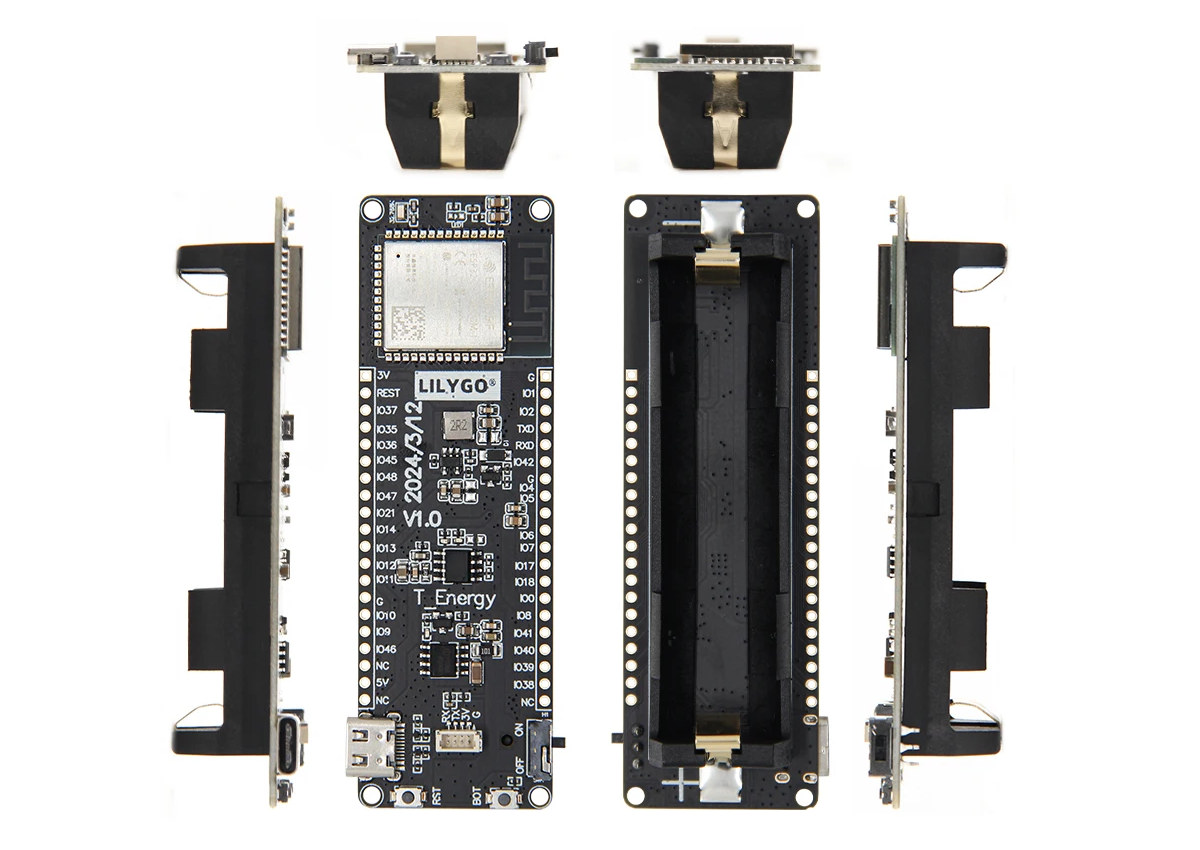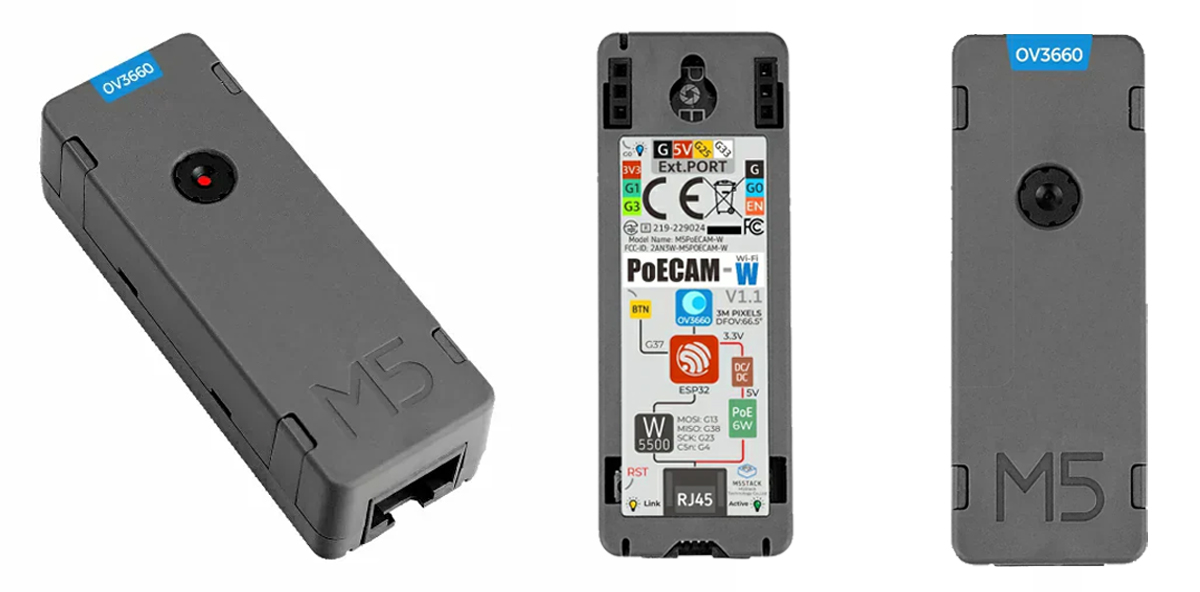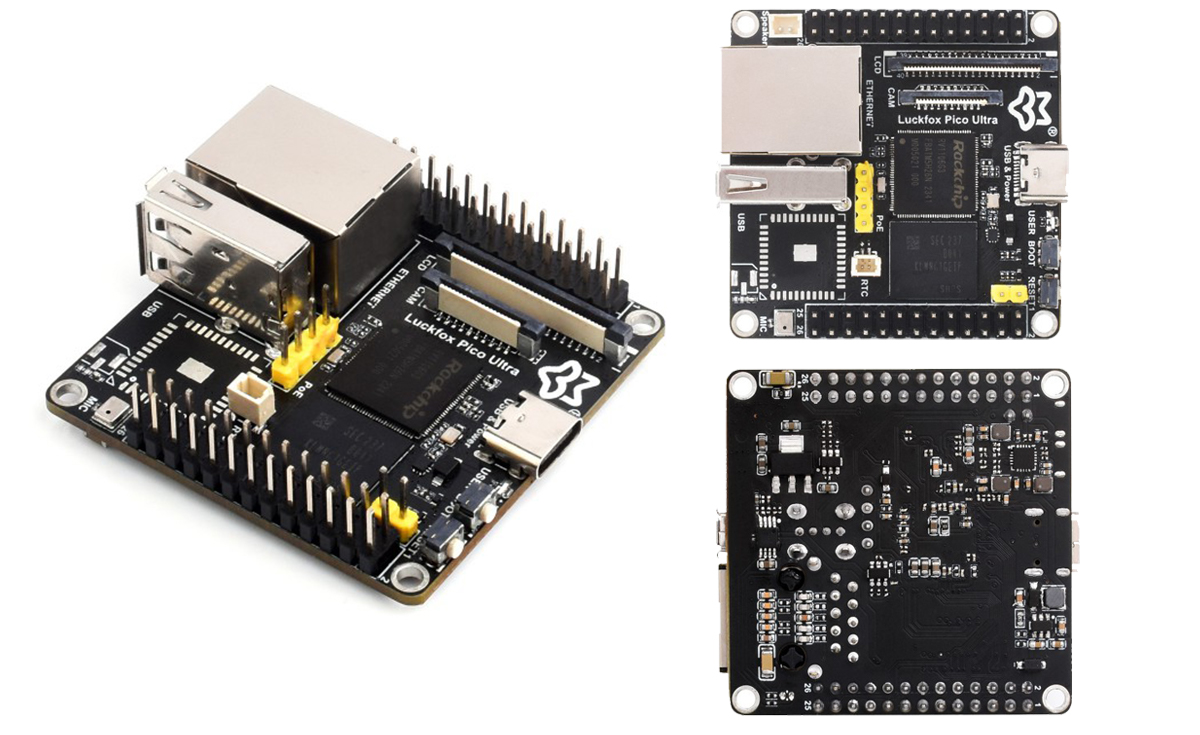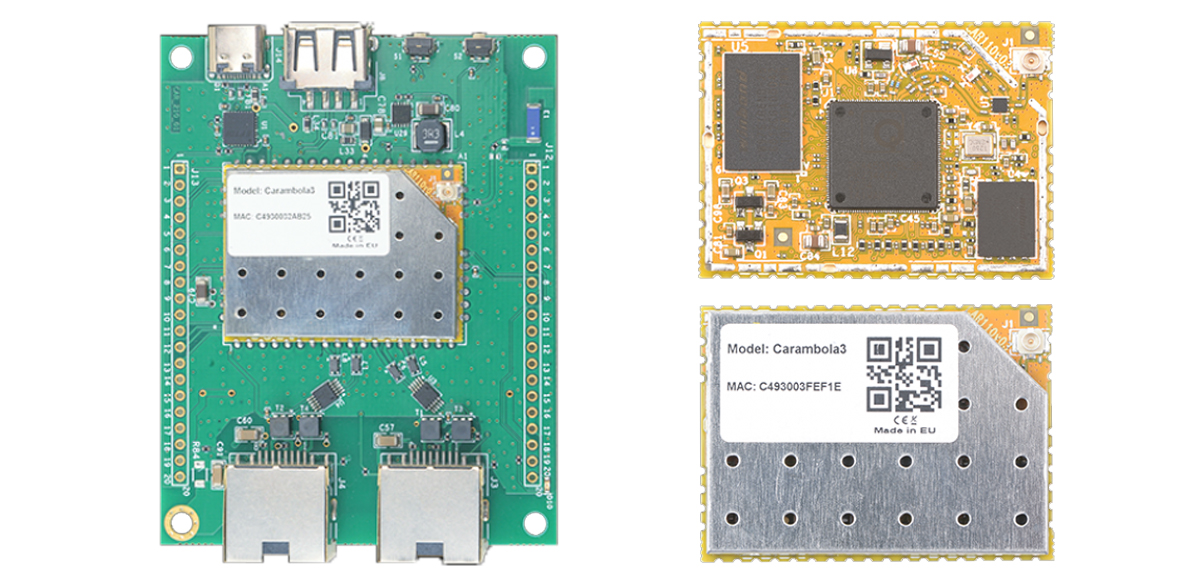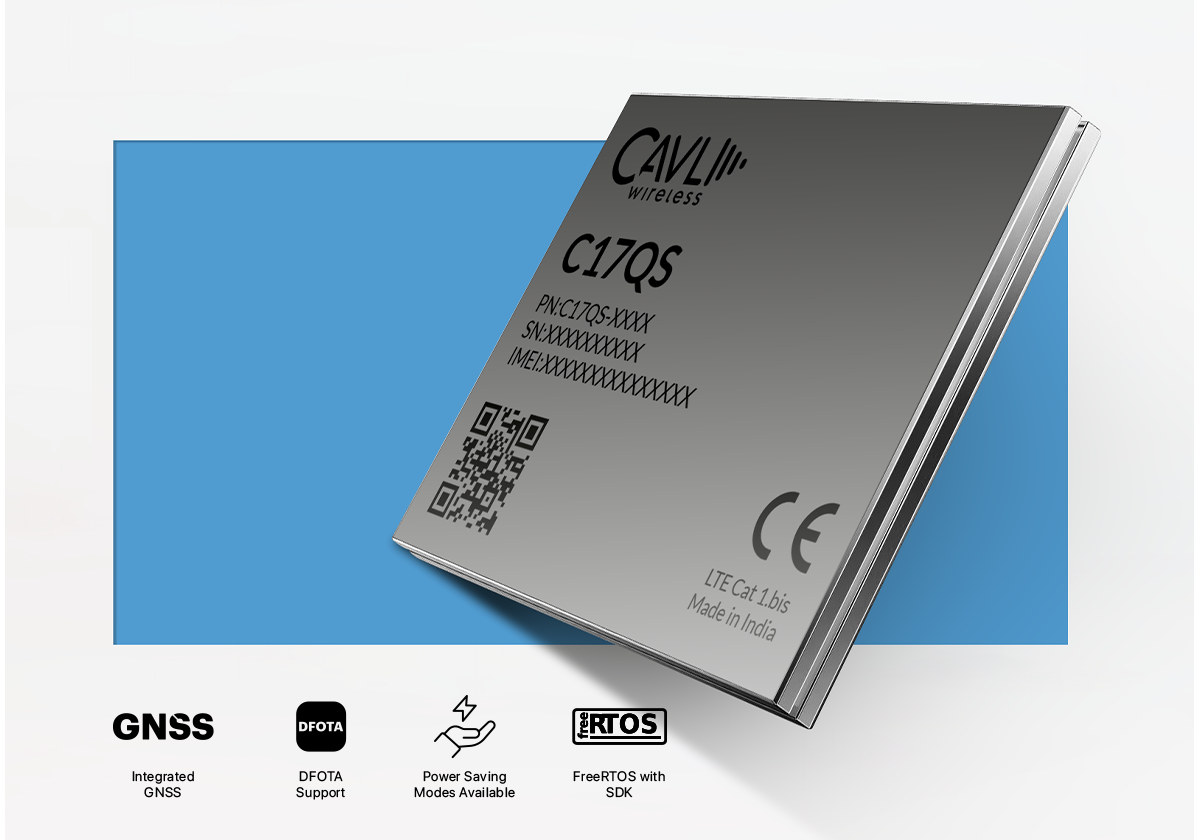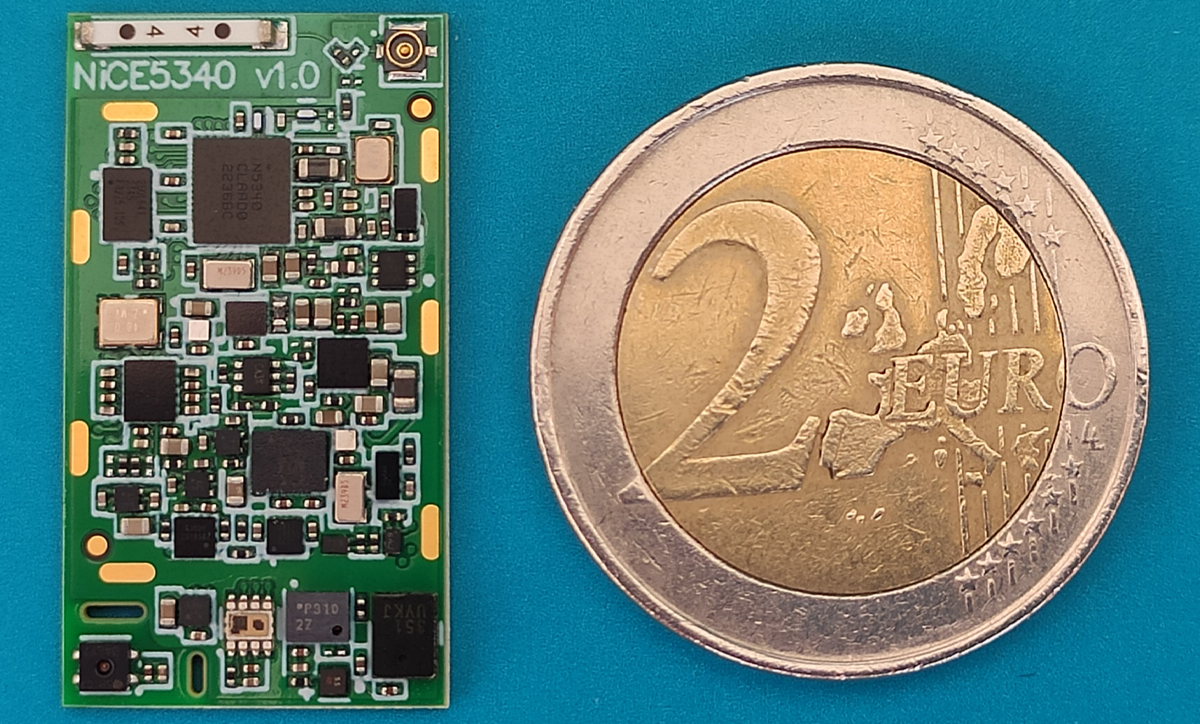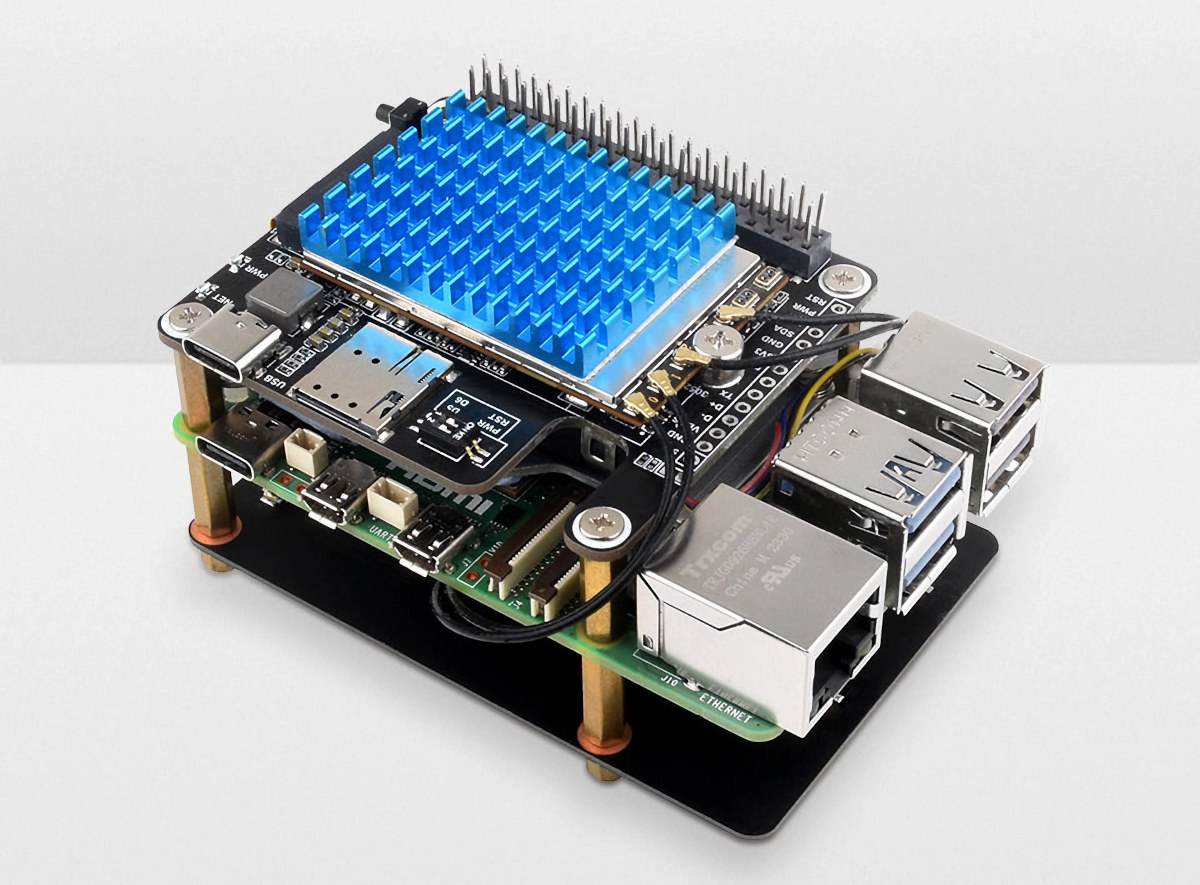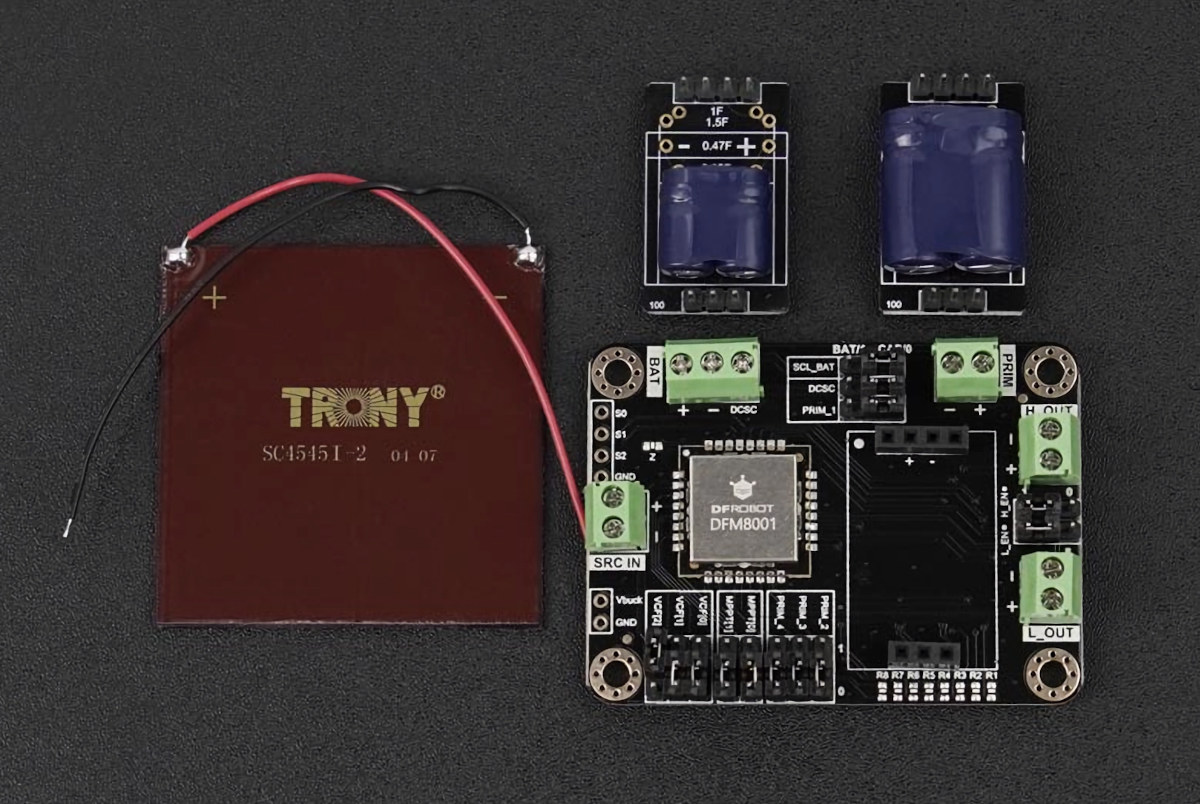LILYGO T-Energy-S3 is an ESP32-S3 WiFi and Bluetooth IoT board with an 18650 battery holder, a USB-C port for charging and programming, and plenty of I/Os thanks to two 20-pin GPIO headers and a Qwiic connector. We’ve already covered a large number of ESP32-S3 boards and products, including some designs for battery operation such as the Tokay Lite AI camera board, LILYGO’s T7-S3 board, and Smart Bee Designs’ Bee S3 board among others. But that usually means providing a 2-pin connector and charging circuitry to connect a LiPo battery, but the T-Energy-S3 ESP32-S3 board works directly with an off-the-shelf 18650 rechargeable Lithium battery. T-Energy-S3 specifications: Wireless Module – ESP32-S3-WROOM-1-N16R8 Espressif Systems ESP32-S3R8 – Dual-core Tensilica LX7 @ up to 240 MHz with vector instructions for AI acceleration, 512KB RAM, 8MB PSRAM Storage – 16 MB flash Wireless – 2.4 GHz WiFi 4 and Bluetooth PCB antenna USB – 1x USB […]
M5Stack M5PoECAM-W V1.1 – A ESP32-powered PoE camera module with 3MP OV3660 sensor
M5Stack M5PoECAM-W V1.1 is a PoE camera module built around the Espressif ESP32 MCU and WIZnet W5500 Hardwired TCP/IP embedded Ethernet controller. The W5500 along with a PoE controller takes care of ethernet and PoE power whereas the 3MP OV3660 sensor is responsible for video and photos. The camera features a wide 65° field of view which makes it suitable for applications like image monitoring and remote data acquisition. Previously we have covered similar camera modules like the LILYGO T-Camera-Plus-S3, Sipeed MaixCAM, and Luxonis OAK-D Series 2 cameras with the latter also having a PoE option. Feel free to check those out if you are interested in the topic. M5Stack M5PoECAM-W V1.1 specifications ESP32-D0WDQ6-V3 wireless module SoC – Espressif ESP32-D0WDQ6-V3 CPU – dual-core Xtensa LX6 processor clocked at up to 240MHz Memory – 520KB SRAM Connectivity – 2.4 GHz 802.11n WiFi 4 and Bluetooth v4.2 BR/EDR and BLE Memory – […]
Luckfox Pico Ultra micro development board features MIPI CSI, WiFi 6, Ethernet, PoE, GPIO headers, and more
The Luckfox Pico Ultra is a Rockchip RV1106-based Linux micro development board with a MIPI CSI port, an Ethernet port, and a 0.5 Tops NPU to run AI and image processing applications. Additionally, it features a speaker header, RGB LED header, GPIO, UART, SPI, I2C, USB, and much more. Waveshare also offers a “W” version of the Pico Ultra with built-in 2.4 GHz Wi-Fi 6 and Bluetooth 5.2. If you want to add PoE support, you can connect to the board with a separate PoE module. Luckfox Pico Ultra Specifications SoC – Rockchip RV1106G3 CPU – Arm Cortex A7 @ 1.2GHz with an integrated RISC-V co-processor. NPU– 0.5 TOPS, supports INT4/INT8/INT16, TensorFlow/MXNet/PyTorch/Caffe/Onnx NN ISP – 5MP high-performance, HDR, WDR, 3DNR, 2DNR, sharpening, defogging, fisheye and gamma correction, feature detection VPU – 3072×1728 (5M) @ 30fps H.265/H.264 encoding, 16M @ 60FPS JPEG snapshot System Memory – 256MB DDR3L Storage – 8GB eMMC flash Display Interface – […]
8devices Carambola 3 WiFi IoT module supports upstream OpenWrt, industrial temperature range
8devices Carambola 3 is a compact System On Module (SoM) built around the Qualcomm QCA4531 WiFi 4 chipset. The module comes in two variants – the Carambola3 for commercial applications (0 to +65°C) and the Carambola3-I for industrial environments (-40 to +85°C). Additionally, 8devices offers a development kit with integrated features like a 2.4 GHz chip antenna, dual LAN ports, USB, GPIO, and much more. Notably, the development kit also supports OpenWrt Upstream, making it ideal for IoT, industrial automation, and smart home projects. The Carambola3 is a pin-to-pin compatible module with the Carambola2, but with a faster processor, more memory, and lower power consumption while the original Carambola was discontinued due to its older technology. 8devices has been developing and selling Wi-Fi modules such as the Rambutan Atheros module, Komikan 802.11ac Wave 2 Module, and recently announced Noni M.2 WiFi 7 module feel free to check those out if […]
Cavli C17QS Cat 1.bis cellular IoT and GNSS module offers more memory, global support, a new FreeRTOS SDK
Cavli Wireless C17QS is a Cat 1.bis cellular IoT and GNSS module that builds up on the Qualcomm QCX216-powered C16QS Cat 1.bis Cellular IoT module introduced last year, with more memory (2MB RAM) and storage (8MB flash), a wider range of LTE bands, multi-band (L1 and L5) GNSS, and a new FreeRTOS SDK for more flexibility compared to the C16QS. The Cavli C17QS Cat 1bis module is designed around a Qualcomm QCX217 Arm Cortex-M3 microcontroller clocked at up to 306MHz clock speed and running FreeRTOS real-time operating system. The module features a range of interfaces including UART, USB 2.0, USIM, SWD, ADCs, I2S, I2C, SPI, and GPIO pins. The new module is pin-to-pin compatible with the C16QS module for easier design upgrades. Cavli C17QS specifications: Wireless IC – Qualcomm QCX217 Arm Cortex-M3 @ 306 MHz, cellular modem-RF Memory – 2MB RAM Storage – 8 MB flash Cellular connectivity LTE CAT […]
NiCE5340 SoM packs Nordic nRF5340 MCU, Lattice iCE40 FPGA, and 11 sensors into a tiny 29x16mm form factor
Stefano Viola’s NiCE5340 SoM is built around a Nordic Semi nRF5340 Bluetooth SoC, an iCE40 FPGA, 11 sensors, a battery charger, and various other peripherals in a 29×16 mm form factor. The nRF5340 used in the SoM is a low-power, dual-core Arm Cortex-M33 SoC with Bluetooth 5.4, Bluetooth LE (BLE), Thread, Zigbee, and other proprietary protocols. Meanwhile, the Lattice iCE40 FPGA features 3520 logic cells, 80 Kbits of embedded Block RAM, I2C, and SPI blocks, and many other features that make it suitable for applications like environmental monitoring, health tracking, and others. Previously, we have written about Unexpected Maker NANOS3, TinyS3, FeatherS3, and ProS3 boards, and ESP32-S3 4G dev board which all fall under the tiny and compact board category but this is the first time we have seen an MCU board with so many features built into a module of that size. Stefano Viola’s NiCE5340 SoM Specification ICs Nordic […]
PCIe to 5G HAT+ for Raspberry Pi 5 takes SIMCom and Quectel 5G modules
Waveshare PCIe to 5G/4G/3G HAT+ for Raspberry Pi 5 is a PCIe Gen 2 x1 to M.2 HAT+ designed to take 5G modules from SIMCom and Quectel and a Nano SIM card. The kit ships with a 4-in-1 PCB antenna, associated cables, a heatsink, a 4cm 16-pin PCIe FPC cable, a 40-pin female header, and a fixture set for mounting. We had previously written about the SixFab 5G HAT for the Raspberry Pi 5 with a Quectel RM502Q-AE M.2 module, but this specific kit still relies on the USB 3.0 interface. The Waveshare kit is the first 5G kit using the PCIe interface from the Raspberry Pi 5 interface and it is offered with Quectel RM502Q-AE, RM530N-GL, RM520N-GL, or SIMCom SIM8262E-M2, SIM8262A-M2 M.2 3042/3052 modules. Waveshare PCIe to 5G HAT+ specifications: M.2 Key B socket for 3042/3052 5G modules with PCIe interface 16-pin PCIe FPC connector directly connected to the […]
DFM8001 indoor energy harvesting kit harnesses solar energy (and mechanical, thermal, RF energy with extra hardware)
DFRobot DFM8001 indoor ambient energy harvesting kit can power IoT devices by harnessing solar energy, and the company claims it can also capture mechanical, thermal, and RF energy from the local environment but there’s no way to do that with that kit without additional hardware. The DFRobot kit is comprised of an evaluation board with the company DFM8001 energy harvesting module, two pluggable supercapacitors, and a solar panel used as power input. You could also use other sources emitting at least 150 mV gathering energy from RF, thermal, or mechanical sources. The board features two outputs one low-voltage (1.2-1.8V) terminal up to 20mA, and a high-voltage (1.8V-4.1V) terminal up to 80mA, and two battery connectors plus a few jumpers for configuration. DFM8001 energy harvesting kit specifications: Operating voltage – 3.3V to 5.5V DC Cold start condition – Input > 400mV 15uW Sustaining voltage after cold start – 150mV. Input voltage […]


